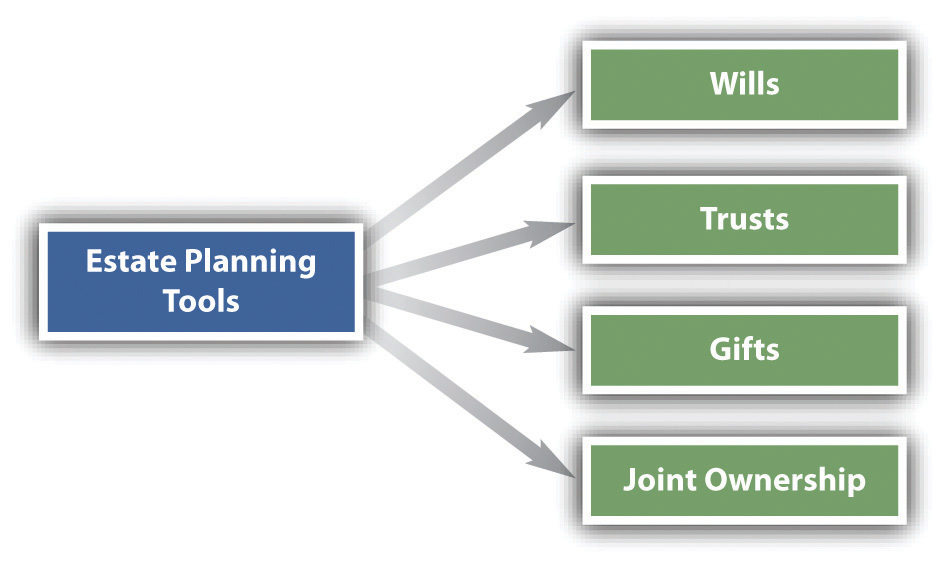This is “Estate Planning: Wills, Estates, and Trusts”, chapter 36 from the book The Legal Environment and Business Law (v. 1.0). For details on it (including licensing), click here.
For more information on the source of this book, or why it is available for free, please see the project's home page. You can browse or download additional books there. To download a .zip file containing this book to use offline, simply click here.
Chapter 36 Estate Planning: Wills, Estates, and Trusts
Learning Objectives
After reading this chapter, you should understand the following:
- How property, both real and personal, can be devised and bequeathed to named heirs in a will
- What happens to property of a decedent when there is no will
- The requirements for “testamentary capacity”—what it takes to make a valid will that can be admitted to probate
- The steps in the probate and administration of a will
- How a will is distinguished from a trust, and how a trust is created, how it functions, and how it may come to an end
- The various kinds of trusts, as well as factors that affect both estates and trusts
Broadly defined, estate planningThe process by which an owner over the course of his life decides how his assets are to be passed on to others at his death. is the process by which someone decides how his assets are to be passed on to others at his death. Estate planning has two general objectives: to ensure that the assets are transferred according to the owner’s wishes and to minimize state and federal taxes.
People have at their disposal four basic estate planning tools: (1) wills, (2) trusts, (3) gifts, and (4) joint ownership (see Figure 36.1 "Estate Planning"). The rules governing gifts are discussed in Chapter 31 "Introduction to Property: Personal Property and Fixtures", and joint ownership is treated in Chapter 33 "The Nature and Regulation of Real Estate and the Environment". Consequently, we focus on the first two tools here. In addition to these tools, certain assets, such as insurance (discussed in Chapter 37 "Insurance"), are useful in estate planning.
Figure 36.1 Estate Planning

Estate planning not only provides for the spouses and children, other relatives and friends, the children’s education, payoff of the mortgage, and so on, but also serves as the principal means by which liquidity can be guaranteed for taxes, expenses for administering the estate, and the like, while preserving the assets of the estate. And whenever a business is formed, estate planning consequences should always be considered, because the form and structure of the business can have important tax ramifications for the individual owners.




